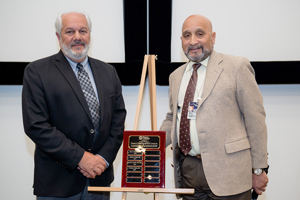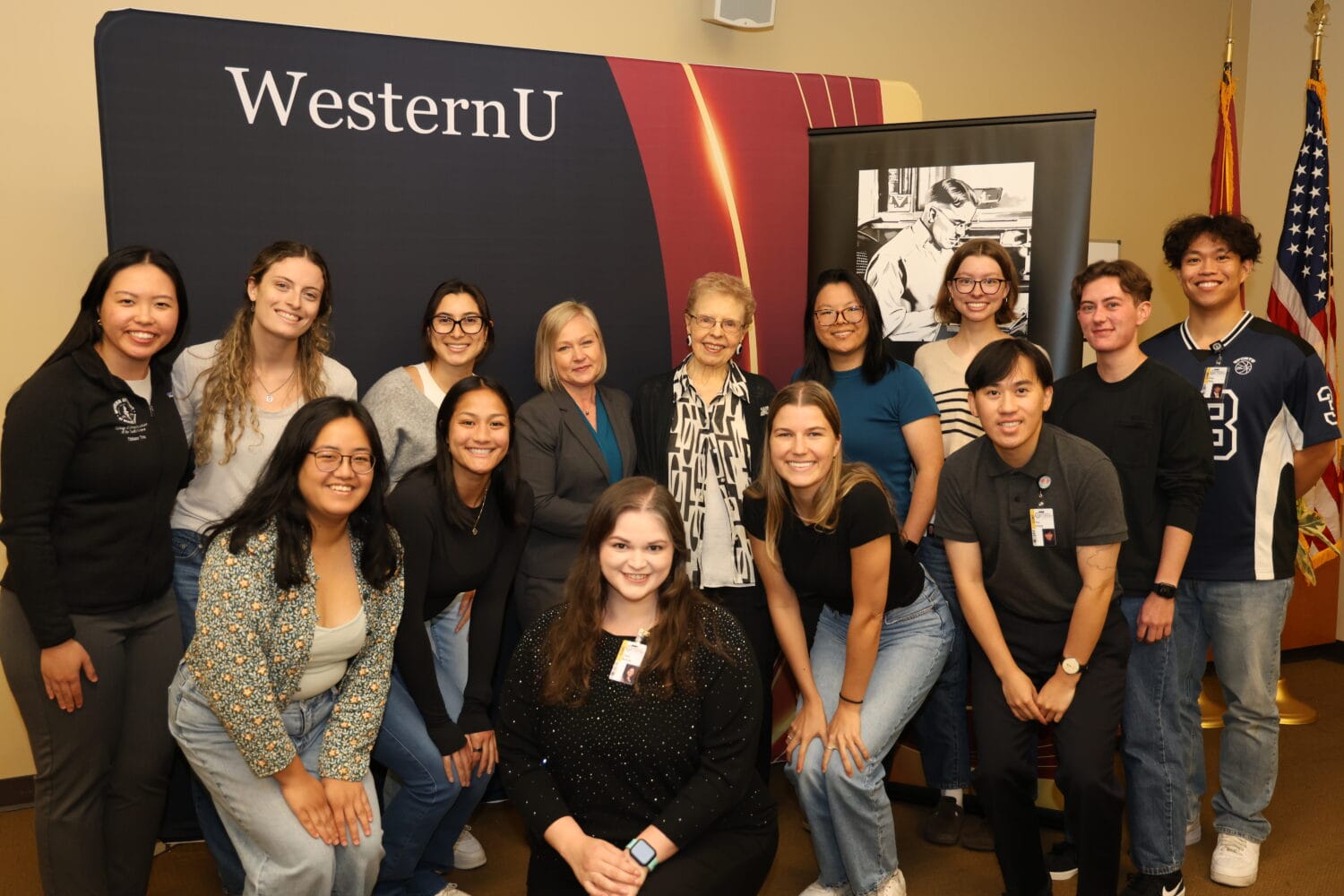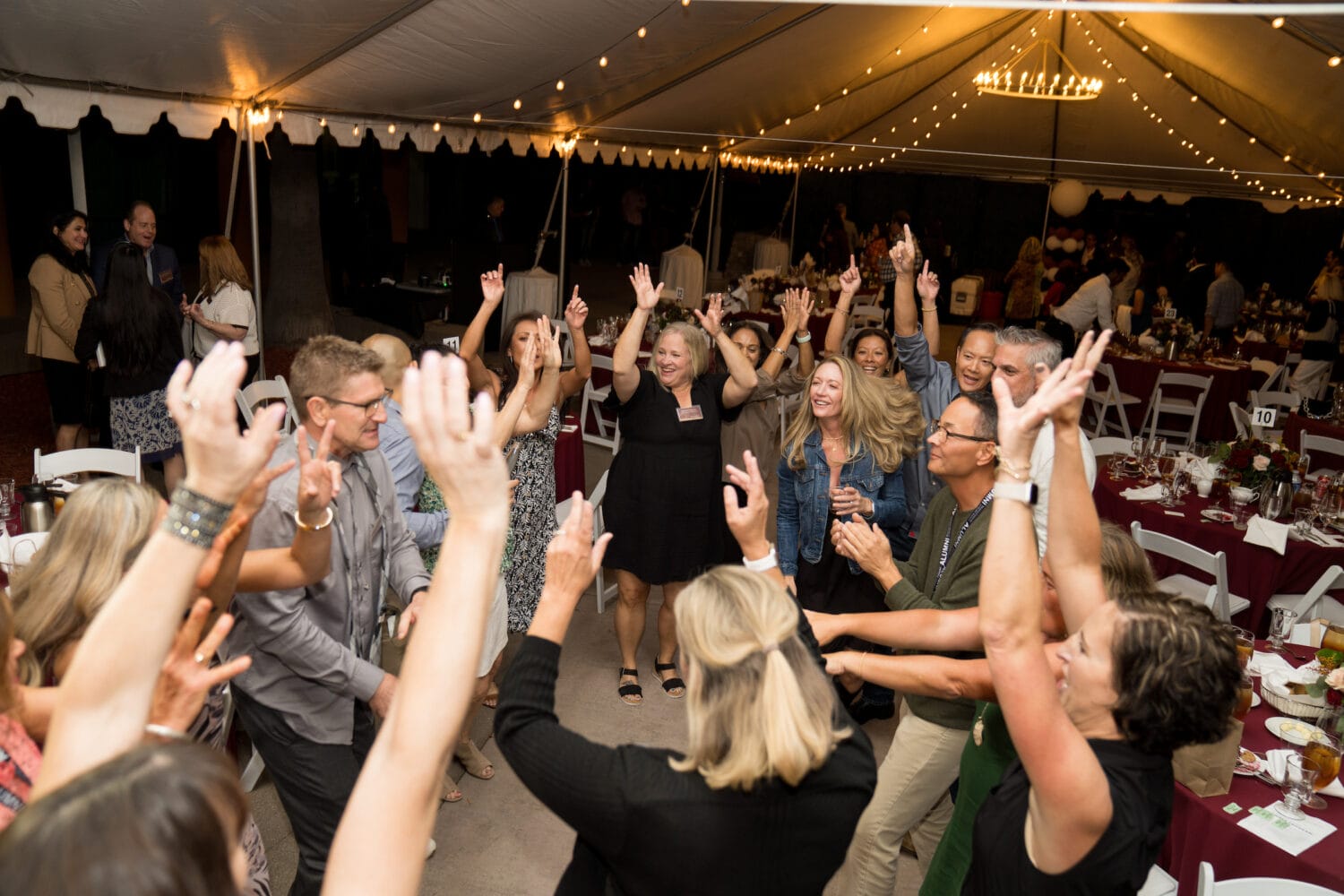WesternU College of Podiatric Medicine Dean’s Lecture: redefining the role of podiatric medicine

Podiatric physicians and surgeons are trained alongside their allopathic and osteopathic peers, have proven to be equal in their ability to care for patients and should be licensed accordingly.
That was the message from Franklin J. Medio, PhD, keynote speaker for the fourth annual Western University of Health Sciences College of Podiatric Medicine Dean’s Distinguished Lecture March 13, 2019 on WesternU’s Pomona, California campus.
Medio, who is president of Consulting Services for the Health Professions, presented “The Recognition of Podiatric Medicine as a Medical-Surgical Specialty: Breaking Down Barriers through Education and Training.”
Medio has worked with allopathic (MD) and osteopathic (DO) physicians as well as podiatric physicians and surgeons. In 1993, Medio and Thos. L. Nelson, MD, co-authored the “Report on the General Medical and Surgical Components of Podiatric Residency Training in California: A Report to the Medical Board of California and the Board of Podiatric Medicine in California.”
Medio and Nelson visited the MDs and DOs who were training podiatric residents to determine their preparedness and performance relative to their medical colleagues.
“The results were extremely positive. The podiatric residents shined very brightly in their ability to handle their patient care responsibilities. Many of them were indistinguishable from their MD and DO peers,” Medio said. “They were able to perform according to the expectations and standards of the medical faculty.”
In 2011, this topic was re-evaluated by a joint task force of the California Medical Association (CMA), the California Orthopaedic Association (COA), Osteopathic Physicians and Surgeons of California (OPSC) and the California Podiatric Medical Association (CPMA). Medio served as a consultant. The goal was to prepare podiatric students to have the education, training and certification that would allow them to be licensed as physicians and surgeons in California.
The task force found results similar to those in the 1993 Medio-Nelson report. And the WesternU College of Podiatric Medicine, which places Doctor of Podiatric Medicine students in many of the same classes as College of Osteopathic Medicine of the Pacific DO students, is close to meeting the requirements for a “Physicians and Surgeons Certificate” awarded to MDs and DOs, Medio said.
CPM students take the same basic science courses, go through the same clinical rotations and are evaluated by the same clinical faculty as COMP students, he said.
“The other things we found over four years of visiting the same institutions and talking to MDs and DOs that teach the podiatric students and the podiatric residents was an echo of what we heard 20 years ago,” Medio said. “Not only were podiatric students well prepared, not only did they conduct themselves as professionals, they handled their patient care responsibilities very well, and they performed at or above their MD or DO peers. We heard the same thing about the residents.”
Medio said he does not consider podiatry a separate profession from allopathic and osteopathic physicians. Dentistry, pharmacy, and optometry have unique qualities and are different professions, he said. But podiatrists perform a complete history and physical examination of patients. They order lab tests. If a patient has a medical problem that’s outside of their scope, they call for a consultation.
“They manage patients just like any other physician. I don’t see the difference,” Medio said. “As far as podiatric medicine and surgery, I see it as a subspecialty. You are primary care providers. In many cases, you are the entry into the health care system for patients.”
The main difference is that podiatric medical students do not take the United States Medical Licensing Examination (USMLE) or the Comprehensive Osteopathic Medical Licensing Examination of the United States (COMLEX-USA). Podiatric medicine and surgery is not recognized by the LCME (Liaison Committee on Medical Education), by COCA (Commission on Osteopathic College Accreditation) or ACGME (Accreditation Council for Graduate Medical Education) as a clinical rotation, Medio said. Once you include it as a clinical rotation, you essentially have the same educational program, he said.
A popular phrase is to “think outside the box.” But Medio encouraged people to think inside the box, with the box being ACGME. By 2020, all residency programs in the U.S. will be accredited by the ACGME. The transition to a single accreditation system for graduate medical training, with DO and MD students in the same system, sets the precedent for podiatric programs to follow.
“The other part of the process is you have residency positions in California. Those positions need to be reviewed and accredited by ACGME,” Medio said. “How can ACGME say no? They’re the ones who said osteopathic programs need to be part of their umbrella. They’re the ones who made the case for a single set of residency training standards. Why should your residency training programs be excluded?
“There is no reason to create something new. Think inside the box,” Medio added. “This message is for the students. For the residents. For young faculty. If this is going to go forward, you are going to be the drivers of it.”
In preparation for the possibility of this event, WesternU CPM students will sit for the Comprehensive Basic Science Examination beginning this year and for the next two years, as a preliminary testing process to identify readiness to sit for the USMLE steps 1, 2 and 3, said CPM Interim Dean Lester J. Jones, DPM, MS.
“The worthiness to sit for the USMLE is premised upon student performance in the well-structured four-year academic environment here at WesternU CPM, which sets the stage for our students’ attainment of the knowledge, skills and attitudes necessary to meet the standards for qualification to be able to be successful at each of the three stages of the USMLE testing process,” he said.



